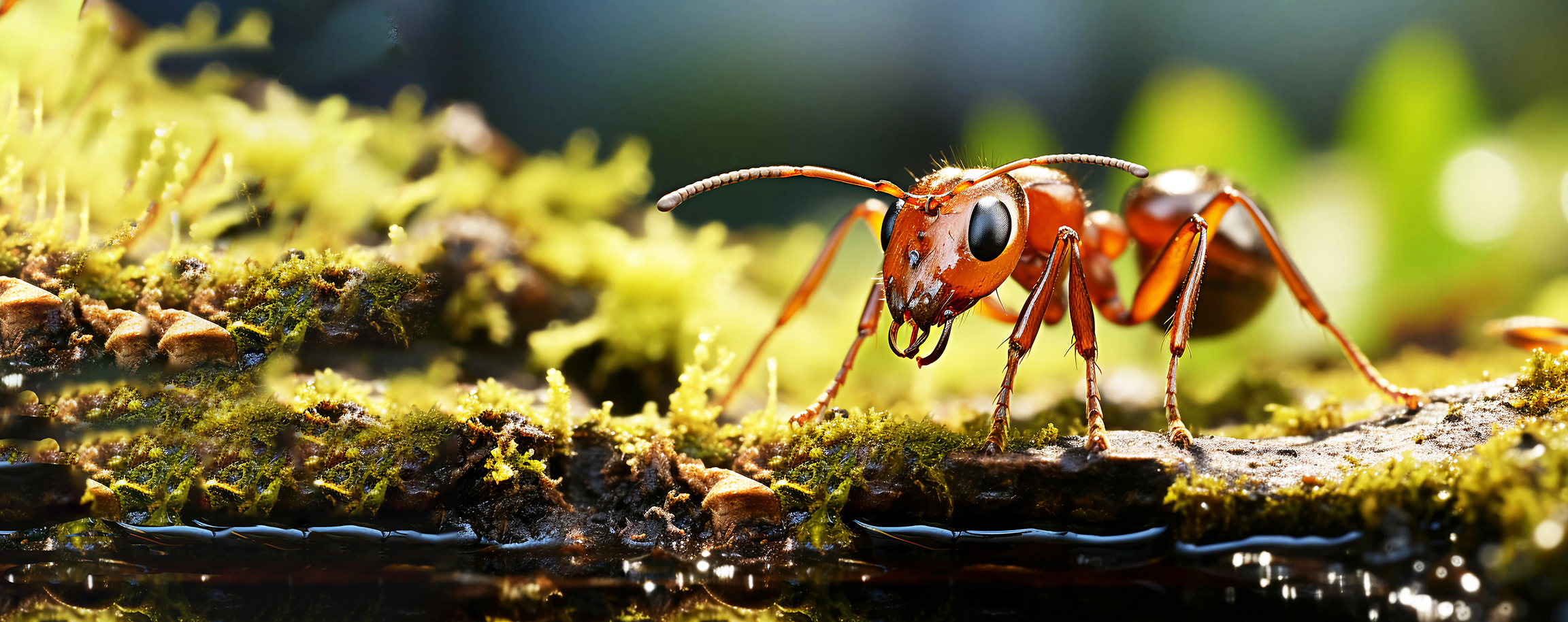Ants!

There is one small creature out there that packs a really big punch and I am not just talking about its sting. This animal lives on six of the seven continents. There are no ants on Ant-arctica (see what I did there?). They were here during the time of the dinosaurs and can survive even the worst natural disaster. They are exceptionally strong, they have good social skills and are amazing architects. Ants have even been to space where they got to live on the space station. These tiny insects can even put fear into adult humans. Scientists called entomologists have completed extensive research on these rock stars of the insect world. Let's look inside the world of ants.
There are around 15,000 different kinds of ants but they all have similar characteristics. Ants are an easily recognizable insect. But did you know that even though ants have visible eyes they can’t see very well. That is where their antennae come in handy. Ants use their antennae to feel around them. They also share and gather information through the chemicals in their antenna. The insect version of a podcast. Ants also have handy dandy mandibles. Ants use their mandibles like tools. They can cut, bite, dig, carry and hunt with them. They also use their mandibles to crush their enemies. The mandibles on a trap jaw ant can close at 140 miles per hour. Good luck getting away from that if you are an enemy or food. Along with the other amazing parts of ant anatomy is how they breathe. Ants do not have lungs like humans do. Instead they have microscopic holes in their exoskeleton called spiracles. They take in oxygen through those holes.
Ants live in a social colony. That means they live and work together for survival. Each ant has a job to do within the colony and it actually affects how each one is built. So if you look inside an ant hill you can tell that there are different kinds of ants. The most important member of a colony is the queen. Her main function is to lay eggs. A queen is the biggest ant, has wings and in some species, can live 20 years. Male drones are next in line. Someone has to mate with the queen. Sad day for them, because they die after a week. It's a good thing that ant eggs only take two weeks to hatch. Worker ants do pretty much everything else. They bring home food, protect the nest and they are the bodyguards. If you have ever been stung by an ant, it was a worker. These feisty little females are the only ones with ovipositors or stingers. Most of the time the pain is intense but short-lived. Stings from a bullet ant can cause pain that lasts up to 12 hours.
Worker ants are not only good for the colony, but they are good for the environment. Ants are the clean-up crew. They eat decaying plants, food humans leave behind and they eat other insects like termites. They also eat other ants. The downfall to this is, other ants will also eat them. Ants provide food for other animals like birds, amphibians and some even get eaten by carnivorous plants. Another benefit to the environment is all the holes ants dig let water and oxygen get below the surface of the ground. This is called aeration. Aeration is important for getting nutrients to a plant and helping it grow.



